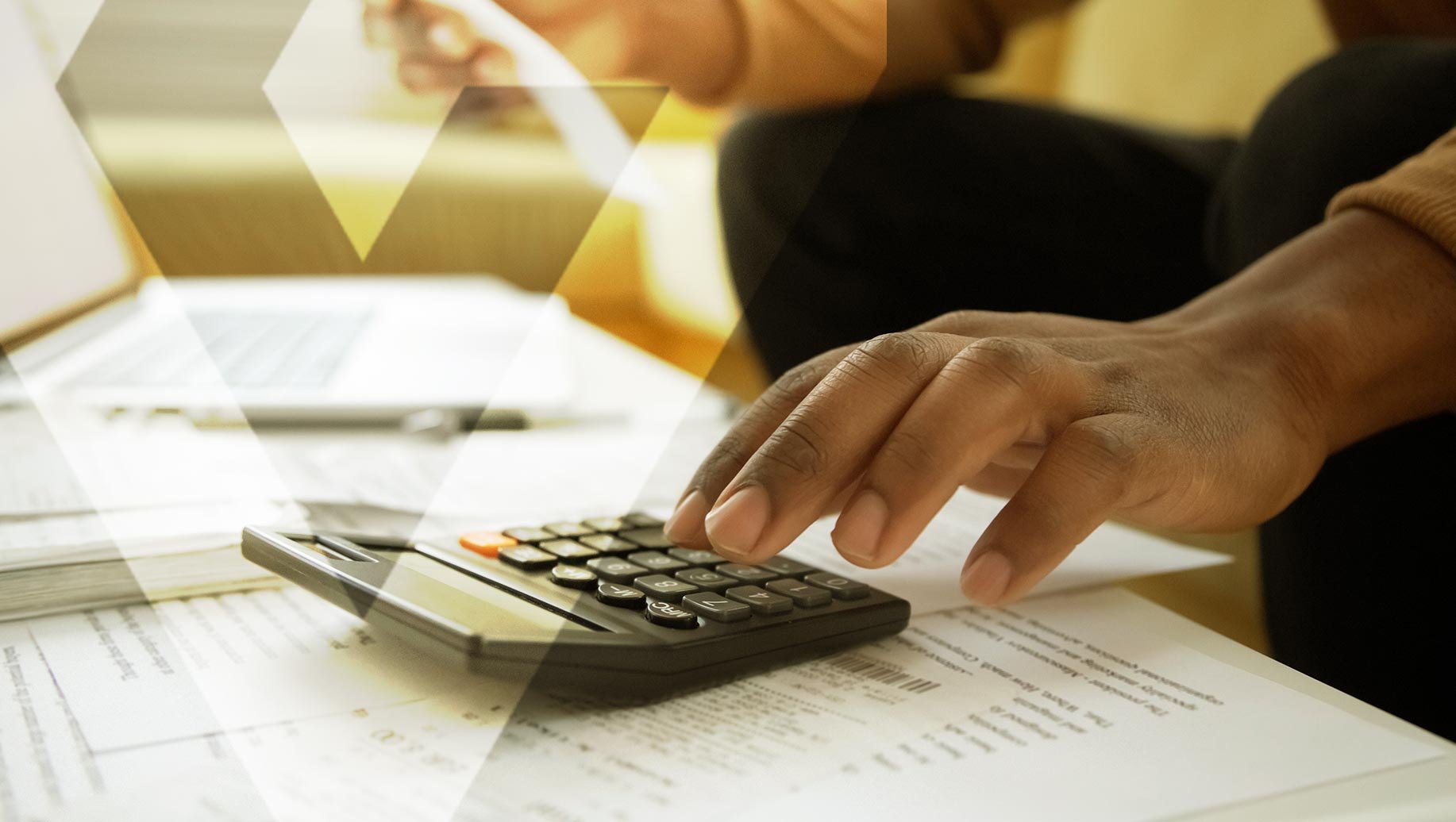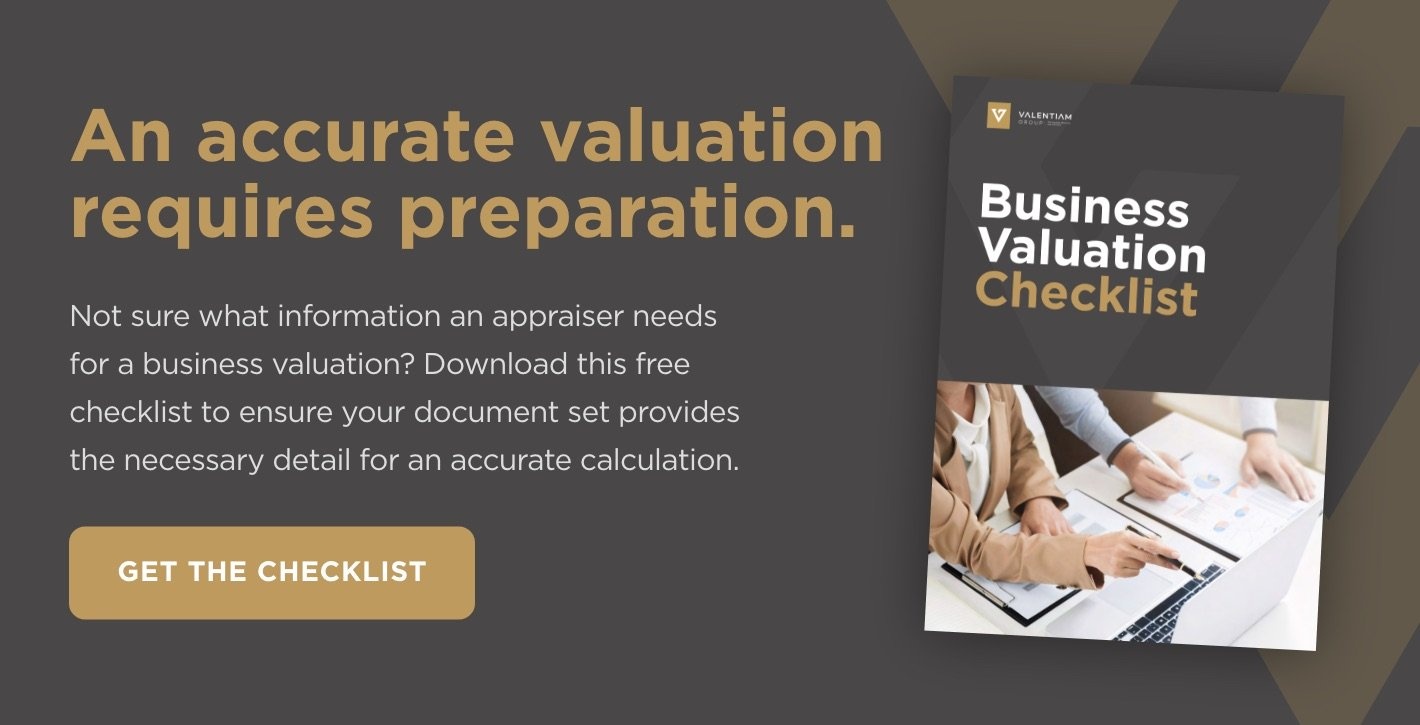The 10 Steps In The Business Valuation Process
Posted by Valentiam Group on July 21, 2020

The business valuation process has a series of steps to follow in a certain order, various formulas for value calculations, and accounting guidelines dictating the rules to follow for specific situations. This process requires extensive experience and knowledge to execute correctly.
Arriving at a defensible value relies not only on following the right valuation process steps, but also on using good judgement in making the assumptions and projections used to calculate value. (Tweet this!) In this article, we’ll examine the steps in the valuation process from start to finish, how the steps interrelate, and the judgement calls involved in the process.
Download our free Business Valuation Checklist to learn about the information needed to calculate an accurate, comprehensive valuation of your business.
The 10 Steps In The Business Valuation Process
There are 10 essential steps to value a company.
- Engage the services of a business valuation professional. Making the right judgement calls is where the expertise of a seasoned business valuation professional is crucial. Because every company is unique and the purpose for and circumstances surrounding every valuation are different, the experience a good business appraiser brings to the task is critical in arriving at a value that is both accurate and defensible.
- Understand the purpose of the valuation. The purpose of the valuation dictates the standard of value and valuation approach or approaches applied, and the assumptions made in calculating value, each of which have an impact on the conclusion of value.
- Determine the basis of value. Consider the type of value being measured and the perspectives of the parties in the transaction. Is the value the transaction price between a willing seller and willing buyer, or the investment value to the current owner? Basis of value is often stipulated by regulation, law, or contract, and may be the reason for pursuing the valuation.
- Determine the premise of value. The purpose of the valuation and basis of value determine the premise of value: going concern premise, or orderly/forced liquidation premise. In the former, the continued operation of the business and use of the business assets is assumed; in the latter, operation or sale of the assets individually or in a group is assumed (i.e. the company will not continue operation in its current form). Another case is mergers and acquisitions; in an M&A transaction, the purchaser may realize benefits that make the acquired business more valuable than the fair market value. This might make the premise of value substantially higher than for a going concern or orderly/forced liquidation premise.
- Gather relevant data. Financial records, contracts, customer/supplier agreements, leases, loans, and all other obligations that will impact future business profitability will need to be analyzed; these records should be compiled by the client and provided to the appraiser. This business valuation checklist offers an overview of the information needed for making an accurate assessment. In addition, the valuation expert will gather information about similar companies’ financial performance for comparison.
- Review the historic performance of the business. To establish how the Subject Company has performed relative to similar businesses, it is critical to first understand the company’s history, ownership structure, and past financial performance. This allows comparison to business valuation data of other companies in the same industry of similar maturity and size. Performance of the Subject Company relative to similar companies is established by comparison to the similar companies’ price-to-earnings ratios, price-to-book values, and price-to-free cash flow metrics.
- Determine the future outlook for the business. Value, in the eyes of a purchaser or investor, derives from the prospect of future cash flows. Future value can be forecasted by taking into account the current strategy of the business and its performance to date. With that understanding, future revenues, operating expenses, taxes, capital requirements, cost of capital, and market share can be projected. Comparison of these metrics to other similar companies can also add insight into the Subject Company’s future prospects. Finally, there must be a business plan valuation. What is management’s plan for ongoing value creation? Does it deviate significantly from the company’s current or past performance? Is it plausible? Adjustments will need to be made to overly optimistic future projections. Forecasting the future of the business requires making a number of assumptions. The experience of a valuation professional is invaluable for making these judgement calls, because a slight change in any of them will have a large material impact on the value derived—and may yield an unrealistic, indefensible value.
- Determine the valuation approach to use. Selecting the appropriate valuation approach or approaches depends on the purpose for the valuation, the basis and premise of value, and in some cases, the availability (or lack) of relevant data. The three basic valuation approaches used in the business valuation process are the market, income, and cost approaches. The advantages and disadvantages of each approach, and the situations where each are most appropriate, are covered in detail in this article. In many cases, more than one approach will be used to determine value with the values derived from each approach averaged to produce a defensible value.
- Apply discounts. For private companies, a marketability discount will apply, to account for the lack of ability to quickly convert an ownership stake to cash. A lack of control discount also applies for inability of a minority shareholder to control key decisions affecting a company. In some specific cases, a key man discount might also apply, to reflect the value associated with an important person such as the founder; the value of the company without that key individual would be substantially less.
- Arrive at a determination of value. The final step is reaching a conclusion of value. This is usually supported by a comprehensive valuation report, which details the information and valuation approach or approaches used by the appraiser, and the assumptions made in projections. This report establishes the defensibility of the conclusion of value by showing how it was derived.
The Most Important Step In The Business Valuation Process
Although all the steps outlined above need to be performed in the business evaluation process, the most important step is the first one—securing the services of a business valuation specialist. A seasoned business appraiser has the advantage of past experience to inform his or her judgement; a professional will have encountered many similar situations that are applicable in the valuation of your company. Most importantly, a valuation expert will provide a valuation that is defensible—whether it’s needed for a tax assessment dispute, a marriage or business partnership dissolution, or a merger or sale.
Valentiam has helped companies in a variety of industries attain accurate enterprise and asset valuations. We have extensive experience in the application of all three valuation methods for a broad range of businesses and situations. Our valuation and transfer pricing specialists have worked with some of the largest companies in the world.
Contact us to see how we can help your company with your valuation and transfer pricing needs.
Topics: Business valuation
Related Posts
EBITDA Multiples By Industry: An Analysis
EBITDA multiples by industry indicate growth, profitability, and stability of profits in various sectors—and are a quick and easy way to estimate value.
Valuation Methods: A Guide
Different types of business valuation methods are suited to specific needs. Here are the three primary types of valuation techniques and when they should be used.


